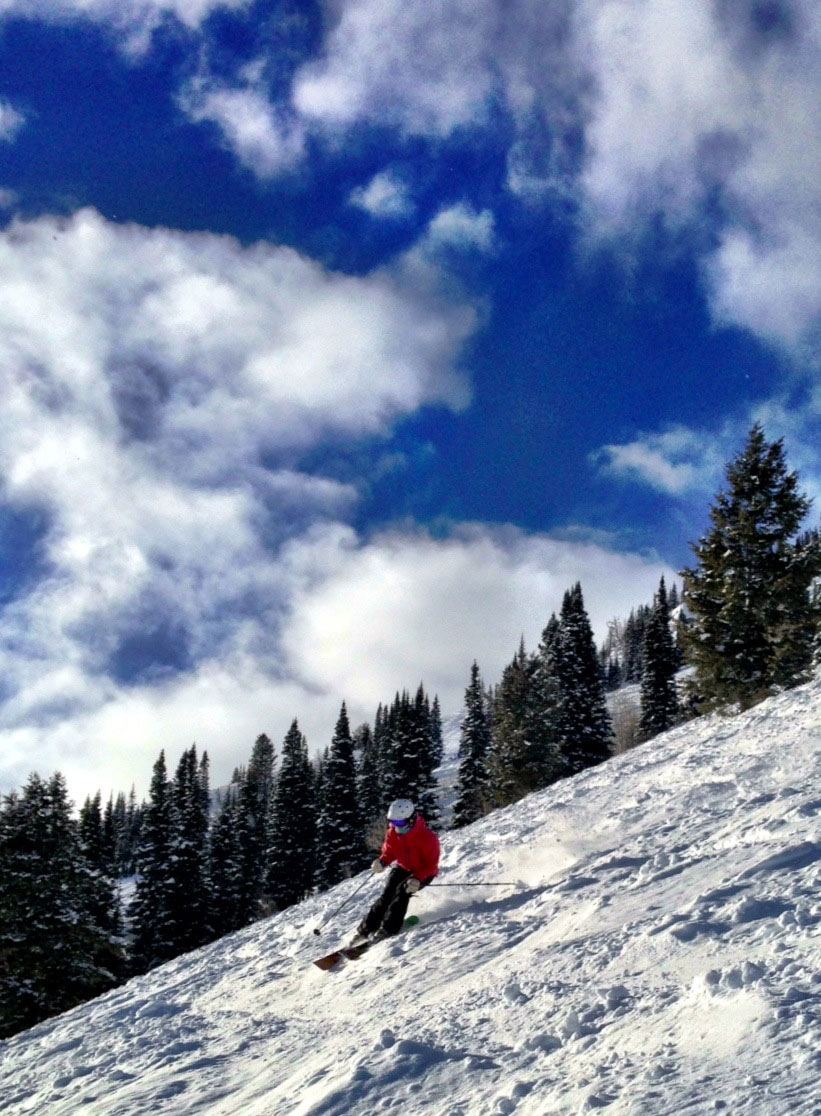Groomers / Hardpack
At slower speeds and with short-radius turns, the edge control on groomers is excellent. You can really lay down turns and trust the ski. At faster speeds, however, I did feel a loss in stability. Pointing it isn’t really an option.

For a women’s ski, the Lola is relatively stiff underfoot with a subtle, progressive, softer flex through the tip and tail. As a result, the Lola handles chopped-up powder well. The easy turn initiation makes the skis extremely maneuverable for navigating through moguls, tight trees, and other obstacles.
In dense, heavy crud, however, the softer tips and lightweight construction can get overwhelmed. This is a compromise found in many skis that are designed to float in powder and be playful. But I found that the stiff backbone of the Lola minimized the rebound from hard chunks of snow, and allowed it to handle crud conditions better than other comparable lightweight, all-mountain skis, like the Atomic Access.
Powder Performance
I was lucky enough to get two successive fresh runs down Casper Bowl just after it opened up for the season, which gave me the perfect opportunity to test the Lola in powder. With 300mm of tip rocker and 200mm of tail rocker, the Lola was super maneuverable through the uncut powder and glided over the snow, which made turning surprisingly effortless. For those who have trouble skiing in powder or find it exhausting, the Lola could be your answer to enjoying it.
The powder performance combined with solid edge grip and a stiff spine make the Lola an ideal all-mountain ski. In addition, the 98mm width, rocker profile, and lightweight construction could make the Lola a great touring ski for those looking to supplement resort skiing.
Some Comparisons: Scott Lola vs. Kastle James vs. Atomic Automatic
While skiing the Lola, I couldn’t help but think about how they compare to the other two pairs of skis I have been on this season. I have been skiing one skinnier ski (the Kastle James, 90mm underfoot) and one wider ski (the Atomic Automatic, 117mm underfoot), and both were useful to help locate the strengths and weaknesses of the Lola. The symmetrical twin tip cut of the James makes it easy to pivot like the Lola, but the James is more comfortable than the Lola at making large turns. And although much softer than the Lola, the James is surprisingly stable at high speeds for a symmetrical, 120-90-120mm ski.
The Automatic has a much surfier feel in powder than the Lola, and it can make huge turns, but like the Lola, its tips are fairly soft, so it doesn’t shine at high speeds in chunkier snow.
For me, the James and the Automatic suit my skiing style better than the Lola, but I can definitely see the appeal of eliminating a quiver and choosing the Lola for its powder and on-piste capability.
Bottom Line
The easy pivotability, rocker design, edge grip, and relatively stiff flex underfoot combine to create a solid one-ski quiver for skiers who prefer shorter turns and mellower speeds. It’s not as much a question of ability, but of skiing style. For those who tend to ski very aggressively and enjoy making big turns and skiing as fast as the conditions will allow, the Lola may be frustrating. However, the Lola has a lot to offer to more conservative skiers.
“L-o-l-a Lola, lo-lo-lo-lo Lola…..” will be stuck in your head more than you might like, and you won’t be doing much hard charging on this ski. But the Lola is a fantastic option for someone who likes an easy-to-turn ski and who wants to be able to own a single pair that will perform well in moguls, the terrain park, groomers, or backcountry powder fields.
